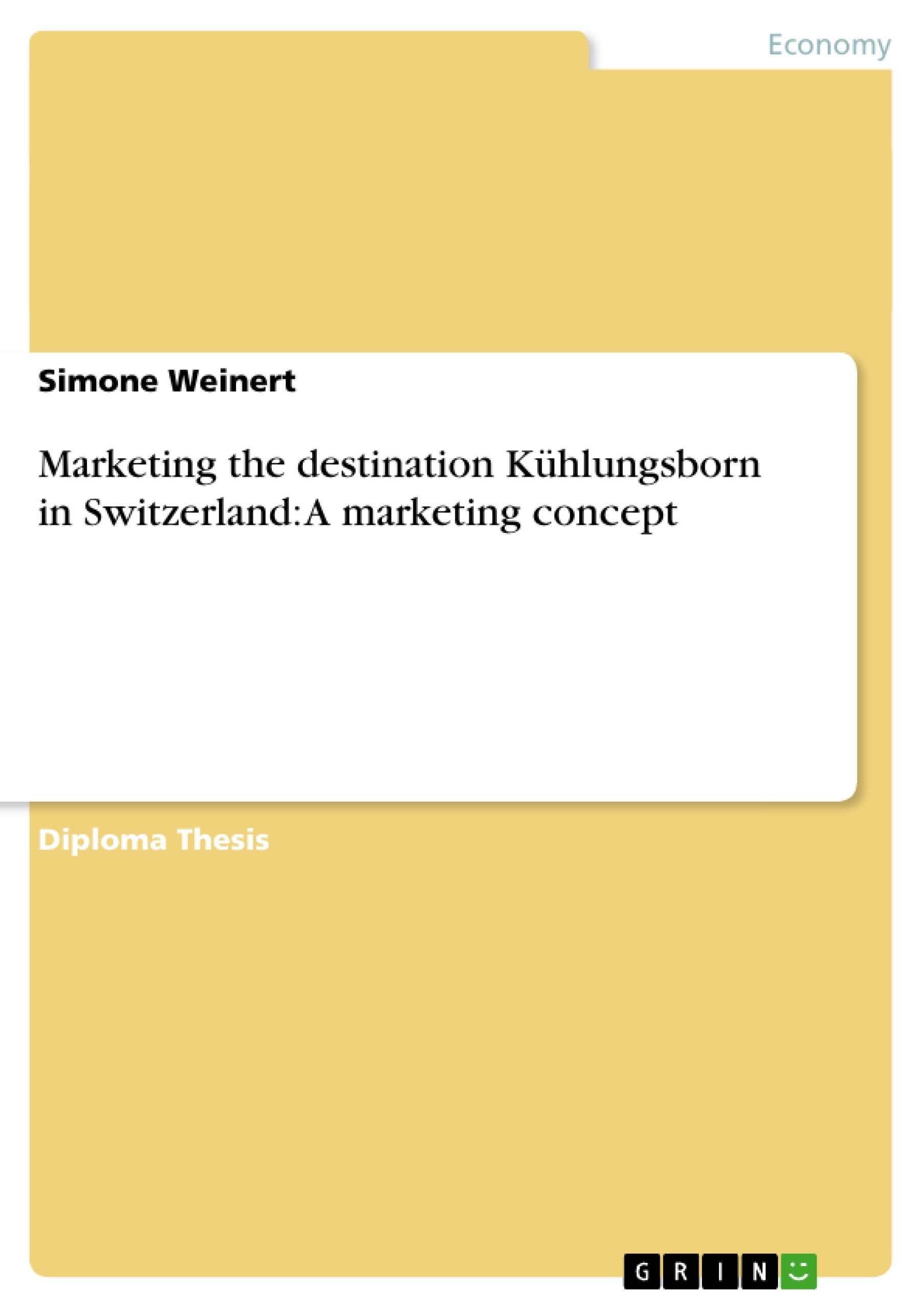Tourism has been a growth market, with chances and risks, for a long time. Due to growing travel experiences tourists are becoming more and more critical and demanding. Thinking of this and the merging Europe, tourism destinations have to offer touristic services supplies, that can make them – also internationally – competitive. Destinations have to react to these new expectations, because only satisfied guests are happy visitors, who are willingly to come back or to speak positively about their experiences.
Considering the dynamics of market trends it becomes more and more important for the service branch tourism to stand up against the needs and desires of the guests. Only with corresponding offers it will be possible to reach the demanding customers.
In consideration of the growing visitor numbers from Switzerland the destination Kühlungsborn aims at preparing itself to enter this market. To do so, in the long-run, it is necessary to follow a strategic planning, that shows which ways have to be gone to accomplish the striven aims.
This book gives an in-depth analysis of the market situation, marketing strategies and the implementation of a concept to enter the Swiss market.
Inhaltsverzeichnis (Table of Contents)
- 1. INTRODUCTION
- 1.1 PROBLEM DEFINITION
- 1.2 TARGETS OF THE PAPER
- 1.3 APPROACH
- 2 DEFINITION OF CENTRAL TERMS
- 2.1 THE DESTINATION
- 2.2 MARKETING OF DESTINATIONS
- 2.3 MARKETING CONCEPTS IN TOURISM
- 3. ANALYSIS OF THE TOURISTIC SERVICES SUPPLY – THE DESTINATION KÜHLUNGSBORN
- 3.1 THE TOURISM DEVELOPMENT IN KÜHLUNGSBORN
- 3.1.1 The history of tourism in Kühlungsborn
- 3.1.2 Current development and situation of the tourism in Kühlungsborn
- 3.2 ANALYSIS OF THE TOURISTIC SERVICES SUPPLY
- 3.2.1 The natural services supply
- 3.2.1.1 The location and natural environment
- 3.2.1.2 The climate and weather
- 3.2.1.3 The landscape
- 3.2.1.4 The Socio-cultural conditions
- 3.2.2 The derived services supply
- 3.2.2.1 The touristic infrastructure
- 3.2.2.2 The touristic suprastructure
- 3.3 SUMMARIZED ASSESSMENT OF THE DESTINATION KÜHLUNGSBORN
- 4. ANALYSIS OF THE TOURISTIC SERVICES DEMAND - THE SWISS TRAVELLERS
- 4.1 ANALYSIS OF THE DEMAND SIDE
- 4.2 ANALYSIS OF THE SWISS SOURCE MARKET
- 4.2.1 The purpose of journeys for all trips abroad
- 4.2.2 Travel intensity and travel frequency
- 4.2.3 Duration of trips
- 4.2.4 Time of travel
- 4.2.5 Organization forms of the trips and means of transportation
- 4.2.6 Travel motives
- 4.2.7 Choice of destinations
- 4.2.8 The Swiss journeys to Germany
- 4.2.9 The booking behaviour of the Swiss population
- 4.2.10 Particularities of the Swiss market
- 4.3 FORECAST OF THE DEVELOPMENT OF THE SWISS MARKET AND SUMMARIZED FINDINGS
- 5. THE MARKETING CONCEPT
- 5.1 ANALYSIS OF THE SITUATION
- 5.1.1 Analysis of the enterprise performance
- 5.1.2 Analysis of the competition performance (competition analysis)
- 5.1.2.1 Heringsdorf and Usedom
- 5.1.2.2 Binz and Rügen
- 5.1.2.3 Poland and other foreign countries
- 5.1.2.4 Measures Kühlungsborn must take
- Tourism Development in Kühlungsborn
- Analysis of the Touristic Services Supply
- Analysis of the Swiss Source Market
- Marketing Strategies for Kühlungsborn
- Competitive Analysis
Zielsetzung und Themenschwerpunkte (Objectives and Key Themes)
This diploma thesis aims to develop a marketing concept for the destination Kühlungsborn in Switzerland. The work analyzes the current state of the tourism industry in Kühlungsborn, examines the characteristics and needs of Swiss travelers, and proposes strategies to attract Swiss tourists to the region. The thesis considers both the natural and derived services supply of the destination and analyzes the Swiss source market in detail.
Zusammenfassung der Kapitel (Chapter Summaries)
The first chapter introduces the problem definition, targets of the paper, and approach. The second chapter defines central terms, such as "destination" and "destination marketing," and explores the application of marketing concepts in tourism. The third chapter analyzes the tourism development in Kühlungsborn, including its history, current situation, and the natural and derived services supply of the destination. The fourth chapter focuses on the Swiss travelers, analyzing their demand side characteristics, travel behavior, and their journeys to Germany. The fifth chapter, which focuses on the marketing concept, analyzes the situation by examining the performance of Kühlungsborn and its competitors. The sixth chapter develops the marketing concept for the destination, including strategies for product, price, distribution, and promotion.
Schlüsselwörter (Keywords)
Key terms and topics include: tourism development, destination marketing, Kühlungsborn, Swiss travelers, source market analysis, marketing concept, product, price, distribution, promotion, competition analysis, and tourism infrastructure.
- Arbeit zitieren
- Simone Weinert (Autor:in), 2004, Marketing the destination Kühlungsborn in Switzerland: A marketing concept, München, GRIN Verlag, https://www.grin.com/document/30371



